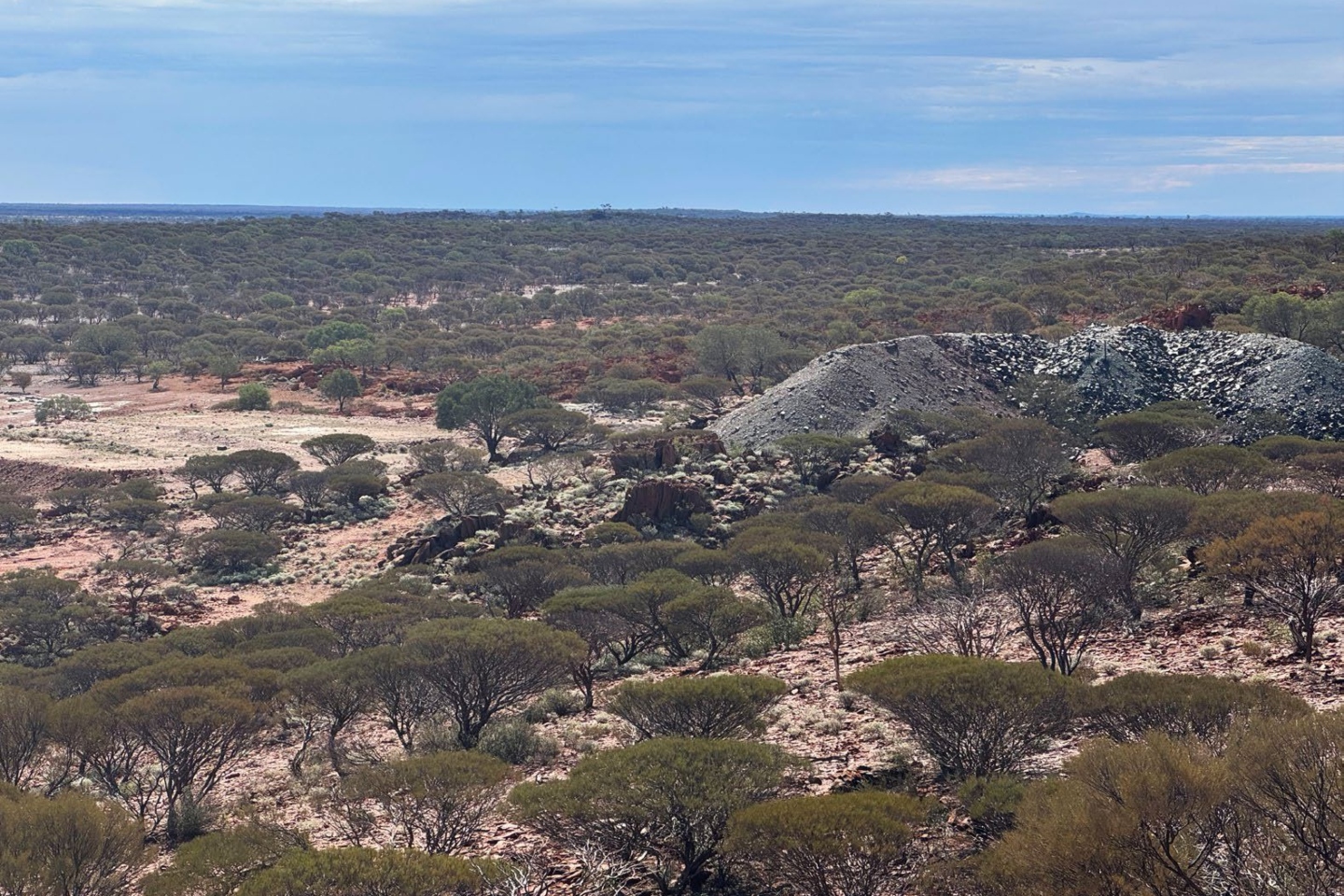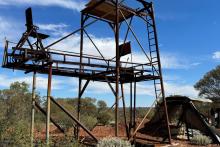Neometals has delivered tantalising early gold assays of up to 21.88g/t gold from a recently completed reverse circulation drilling campaign at its wholly owned Barrambie gold project. The drill bit nailed two impressive gold intercepts, which hint at untapped potential in the Barrambie greenstone belt, 80 kilometres northwest of Sandstone in WA’s prolific Murchison region.


Neometals Ltd has delivered tantalising early gold assays from a recently completed reverse circulation (RC) drilling campaign at its wholly owned Barrambie gold project. The drill bit nailed two impressive gold intercepts which hint at untapped potential in the Barrambie greenstone belt, 80 kilometres northwest of Sandstone in WA’s prolific Murchison region.
The ambitious drilling program, which spanned October and November, wrapped up with 82 RC drill holes for a total of 8457m across three key sites along the Barrambie Ranges gold trend.
The sites include the high-grade Golden Treasure mine, the Ironclad deposit, and the historic Mystery mine.
At Barrambie Ranges specifically, 26 holes accounted for 3258m, targeting extensions of known high-grade shoots below the Golden Treasure-Barrambie North workings. The drilling also tested for halo mineralisation, associated parallel structures and shallow historic intersections over a 600m strike length.
The intensive first-pass scout campaign marks a significant pivot for Neometals, which has refocused on gold after two decades of prioritising the project's world-class titanium-vanadium resources.
From the initial 75 fast-tracked samples, taken from geologically promising intervals such as quartz-veined zones and near-lode sections - and representing just 2 per cent of the total samples obtained - two standout hits have emerged that unequivocally hark back to the coarse, free-milling gold that defined the area in it's heyday.
Neometals managing director Chris Reed said: “These early results support our view of narrow-vein, high-grade gold potential along the Barrambie Ranges gold trend, and we are encouraged by the first assays and the potential opportunity they present. However, our primary short-term focus is growing and advancing the Ironclad deposit towards commercial production.”
One hole bored through 5 metres assaying 5.64 grams per tonne (g/t) gold from 84m, including a punchy 2-metre section at 13.27g/t gold, while another hole about 700m to the south delivered 2m at 11.75g/t gold from 137m, with a 1-metre sweetener assaying 21.88g/t gold.
The results align with the trend's structural blueprint, characterised by narrow, near-vertical quartz veins striking at about 350° - such as at the Golden Treasure lode - which intersects east-dipping rocks such as felsic dykes and quartz lodes which strike at about 340°.
Those linear structures are all hosted in intensely folded chlorite-quartz-mica meta-siltstones with pyrite margins and silica-carbonate-epidote halos.
That structural association and alteration assemblage is geological catnip, putting the project in the sweet spot of a true Archean orogenic gold system, with all the right ingredients for high-grade shoots.
That type of footprint is similar to that seen around multi-million-ounce orogenic gold camps across the Murchison and Eastern Goldfields.
Historic production averaged a blistering 24.8g/t gold across the belt's various mines, with the assay variability observed to date suggesting a classic nugget effect.
Old reports refer to a high component of free fine gold in the mineralisation at the Golden Treasure mine. Neometals says its analyses to date display notable variance that is in keeping with the presence of free gold in the samples.
Neometals says it recognises the variability is a key issue and one it intends to tackle in future protocols, since it lies at the heart of accurate gold resource estimations.
The Barrambie project's 505 square kilometres of tenure encloses about 40km of strike along the under-explored Barrambie greenstone belt that has been effectively dormant for gold since the 1990’s, amid the company’s titanium focus.
An extensive historical dataset compiled by Jeremy Peters of Perth consultancy Burnt Shirt underpinned a 2024 exploration target of 8 to 10.5 million tonnes grading 1.3 to 2.3g/t gold for 335,000 to 775,000 ounces. It paints a compelling picture of a project with genuine multi-occurrence upside and the scale to deliver far more than a single-hit story.
Neometals’ drilling campaign builds on its earlier 2025 maiden drilling at Ironclad, which led to the company’s inferred mineral resource estimate of 13,000 ounce gold grading 1.6g/t gold. The same program nailed 10.2m at 2.72g/t gold, including 1.45m assaying 8.97g/t gold at the company’s Mystery prospect, verifying historic mineralisation and teeing up extensions.
Routine assays for the remaining 3183 Barrambie Ranges samples, along with those from Ironclad and Mystery, are still in progress, with Ironclad results due in January 2026. The assays will then go towards a resource upgrade and a mine plan by the end of the March quarter.
The company’s early hits will shape the follow-up work along the Barrambie Ranges trend, potentially unlocking scalable shoots via targeted infill and step-outs.
Neometals now finds itself with a rare dual-commodity powerhouse in a greenstone belt that’s starting to reveal its gold secrets again and a broader portfolio anchored by an exciting world-class titanium-vanadium critical minerals exploration project in WA's under-explored Murchison region.
As the remaining assays roll in and the company sharpens its 2026 exploration and mine plans, Barrambie is shaping up as an important project ready to rejoin the Murchison gold story.
Is your ASX-listed company doing something interesting? Contact: matt.birney@businessnews.com.au













